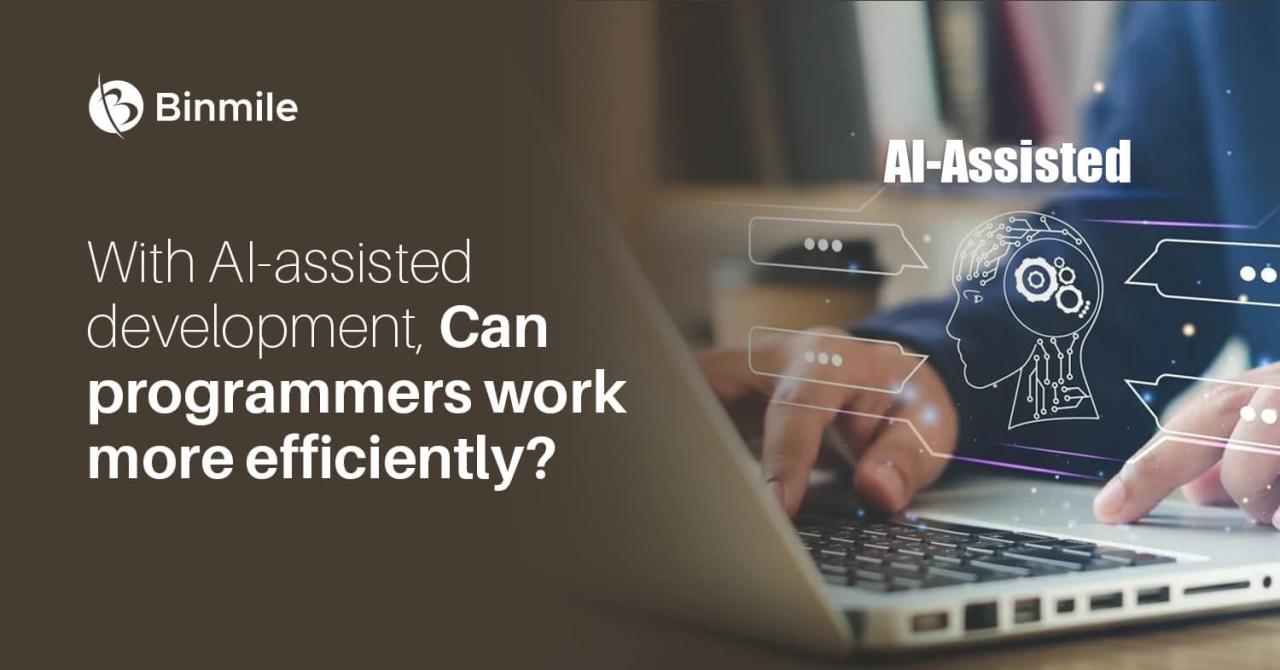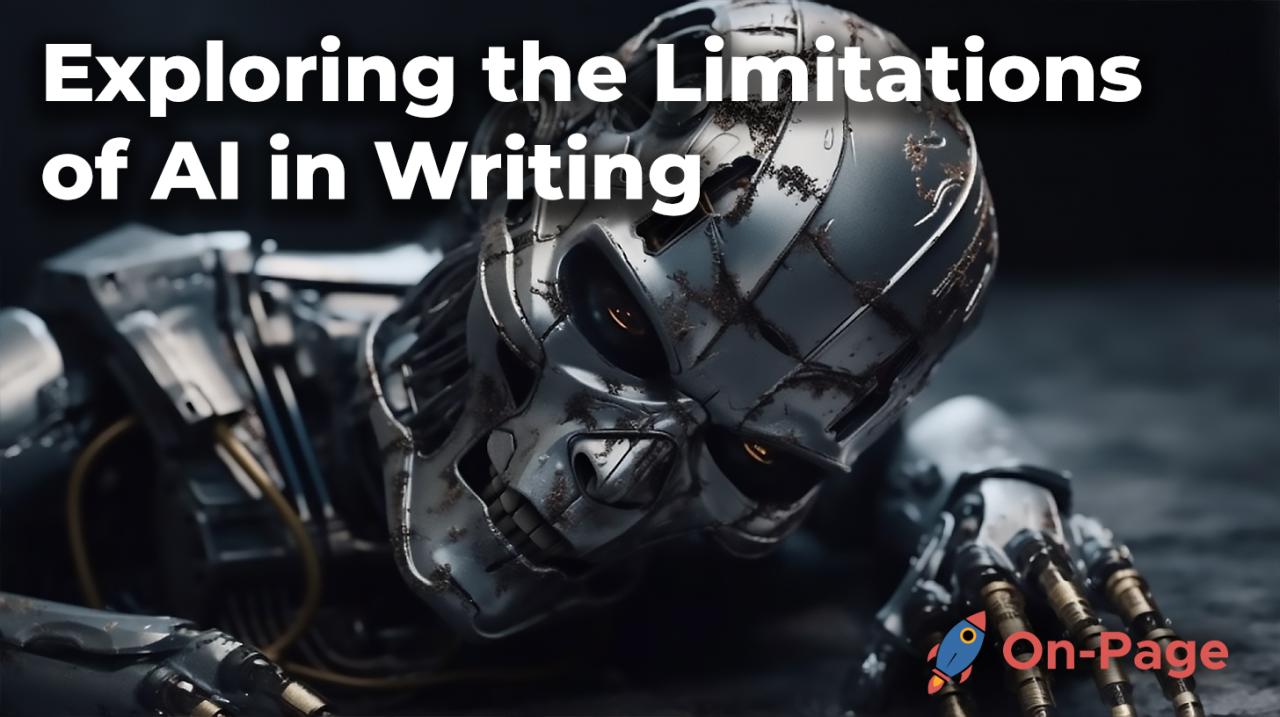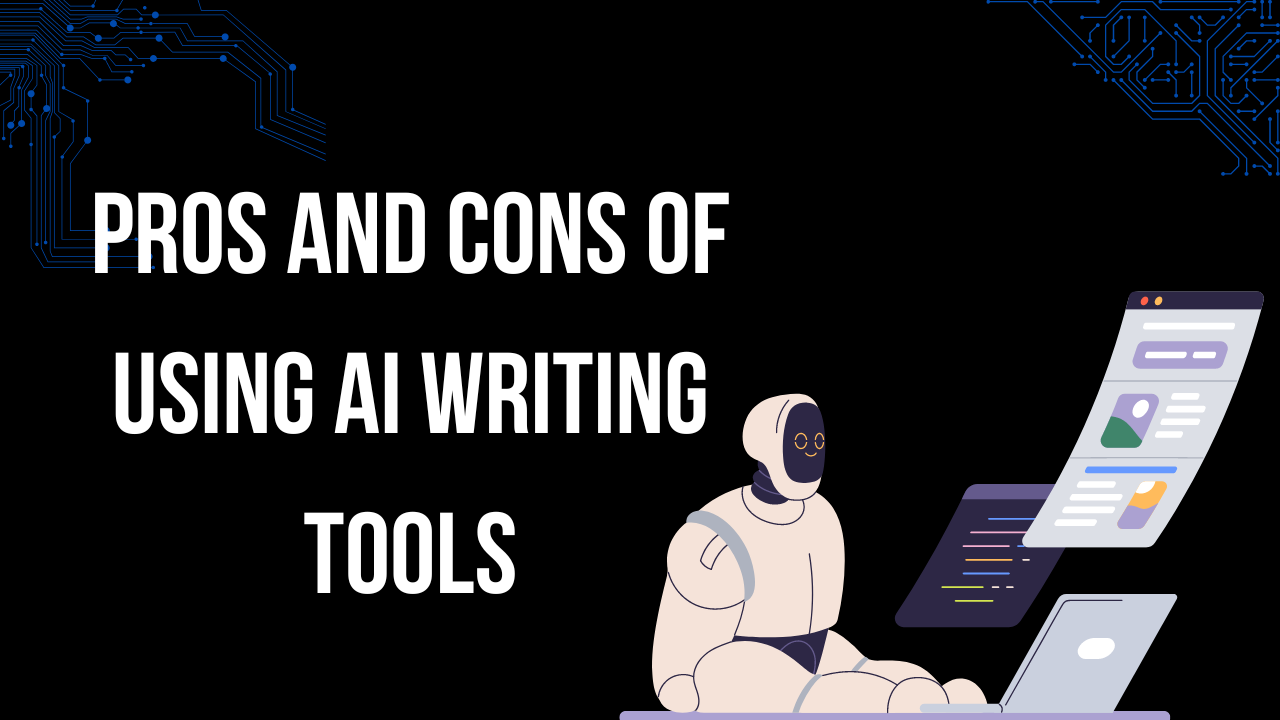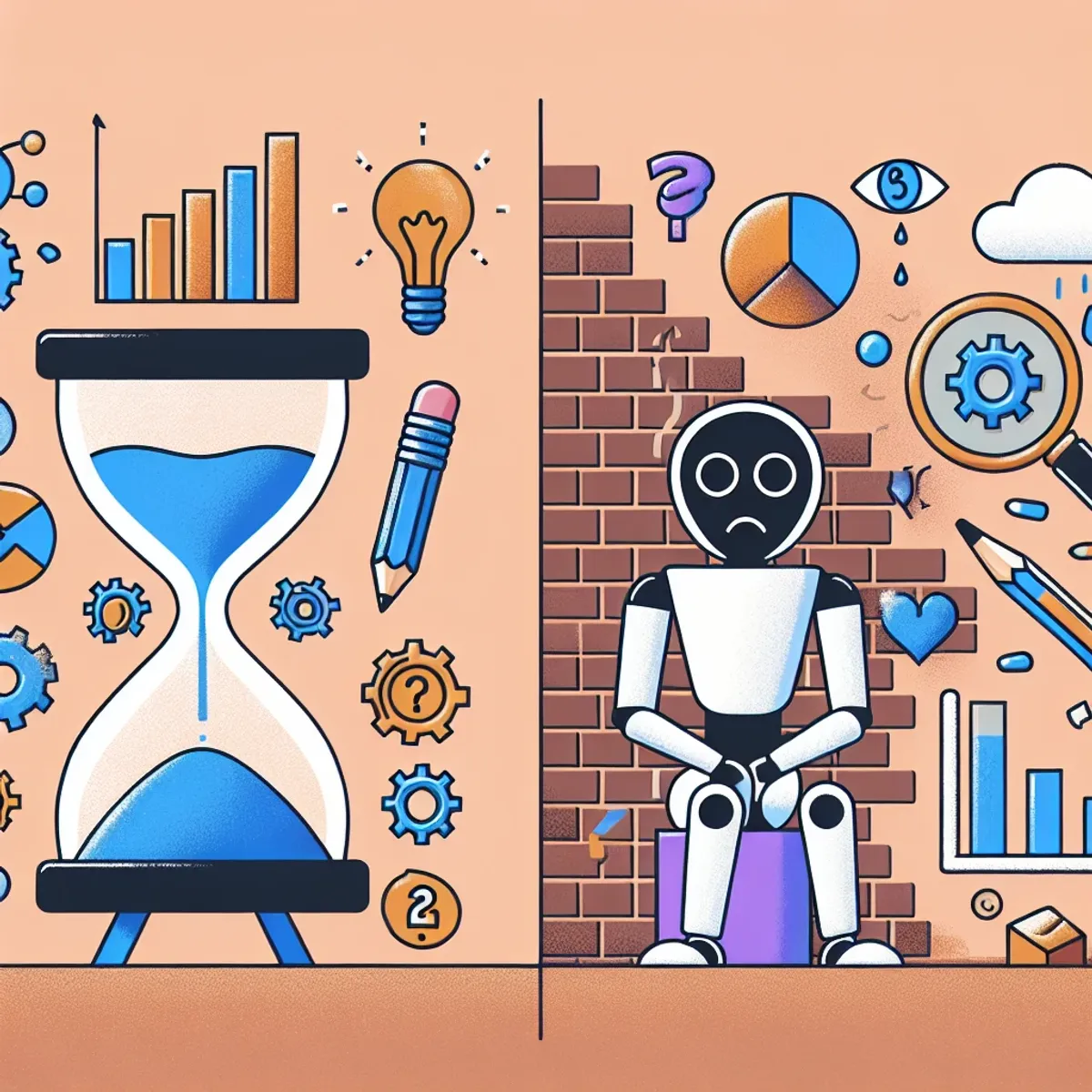What are the limitations of AI in helping programmers write efficient code? This question delves into the fascinating, and sometimes frustrating, intersection of artificial intelligence and software development. While AI tools promise to revolutionize coding, boosting productivity and reducing errors, their capabilities are not without significant boundaries. Understanding these limitations is crucial for programmers seeking to leverage AI effectively, avoiding pitfalls and ensuring the delivery of robust, efficient, and secure software.
AI’s current limitations stem from its fundamental reliance on data and algorithms. It excels at pattern recognition and code generation based on existing examples, but struggles with nuanced understanding, creative problem-solving, and the unpredictable nature of real-world applications. This exploration will examine key areas where AI falls short, including handling edge cases, debugging complex code, ensuring code readability and maintainability, and addressing critical security concerns.
Understanding of Context and Nuance

AI’s ability to generate efficient code is significantly hampered by its limited understanding of context and nuance. While AI can successfully translate explicit instructions into code, it often struggles with the implicit knowledge and subtle contextual cues that experienced programmers rely on to write truly efficient and maintainable solutions. This limitation stems from the fundamental difference between symbolic manipulation (what AI excels at) and genuine comprehension of the problem domain and the programmer’s intent.AI struggles to interpret the programmer’s intent beyond explicit code specifications.
It operates based on patterns and statistical correlations learned from vast datasets of code, lacking the capacity for true understanding of the underlying problem or the subtle implications of design choices. This leads to situations where AI-generated code might technically function but fails to meet implicit requirements or optimizes for the wrong metrics.
AI Code Generation Failures Due to Lack of Implicit Requirements
Consider a scenario where a programmer needs a function to sort a list of objects based on a specific attribute. The explicit requirement might be simply “sort the list.” However, an efficient solution might involve choosing a specific sorting algorithm (e.g., quicksort for generally efficient performance, mergesort for stability) based on factors like the data distribution or the size of the list.
An AI, lacking this implicit understanding, might generate code using a less efficient algorithm, resulting in suboptimal performance. Similarly, the programmer might implicitly assume certain properties of the input data (e.g., the list is already partially sorted), which the AI might overlook, leading to unnecessary computations. The AI might prioritize code brevity over performance, generating concise but inefficient code that fails to account for edge cases or potential bottlenecks.
Examples of Contextual Information Crucial for Efficiency
Efficient code often relies on subtle contextual information that is not explicitly stated. For instance, understanding data structures and their performance characteristics is crucial. A programmer might choose a hash table over a linked list for faster lookups, but an AI, lacking this domain knowledge, might generate code using a less efficient data structure. Another example involves optimizing for specific hardware architectures.
A programmer might write assembly code for performance-critical sections, taking advantage of specific CPU instructions, but an AI might generate generic code that is less efficient on the target hardware. Finally, consider code that interacts with external systems. A programmer might incorporate error handling and retry mechanisms based on their understanding of the external system’s reliability, but an AI might produce code that lacks robust error handling, leading to unexpected failures.
Comparison of AI-Generated and Human-Written Code Efficiency
The following table illustrates the potential differences in efficiency between AI-generated and human-written code for a complex algorithm.
| Algorithm | AI-Generated Code | Human-Written Code | Efficiency Comparison |
|---|---|---|---|
| Graph Traversal (Dijkstra’s Algorithm) | Uses a naive implementation with O(V^3) time complexity. | Implements a Fibonacci heap based priority queue, achieving O(E log V) time complexity. | Human-written code is significantly more efficient, especially for large graphs. |
| String Matching (Regular Expressions) | Generates a brute-force approach with O(mn) time complexity, where ‘m’ is the length of the pattern and ‘n’ is the length of the text. | Utilizes optimized algorithms like the Boyer-Moore algorithm (average O(n), worst case O(mn)). | Human-written code provides substantial performance improvements for large texts and complex patterns. |
| Sorting (Large Dataset) | Selects a simple bubble sort, resulting in O(n^2) time complexity. | Implements merge sort or quicksort, achieving O(n log n) time complexity. | Human-written code offers dramatically better performance for large datasets. |
Handling Edge Cases and Unexpected Inputs

AI’s prowess in code generation is undeniable, but its limitations become apparent when confronted with the unpredictable nature of real-world applications. While AI excels at generating code based on patterns observed in its training data, it struggles with edge cases – those unusual or unexpected inputs and situations not explicitly represented in that data. This inability to anticipate and gracefully handle these scenarios significantly impacts the efficiency and reliability of the generated code.AI’s reliance on statistical probabilities and pattern recognition inherently limits its ability to anticipate truly novel situations.
Unlike human programmers who can leverage experience, intuition, and an understanding of the broader context of a problem, AI operates within the confines of its training dataset. This lack of real-world experience translates to a reduced capacity for predicting and handling edge cases effectively.
Challenges in Predicting and Handling Unseen Inputs
AI models are trained on vast amounts of code, learning to associate input patterns with corresponding outputs. However, this training process inherently favors common scenarios. Uncommon or unexpected inputs, which often constitute edge cases, are underrepresented or entirely absent from the training data. Consequently, the AI may generate code that functions correctly for typical inputs but fails catastrophically when faced with an edge case.
The AI lacks the ability to generalize beyond the patterns it has explicitly learned. For example, an AI might generate efficient code for sorting a list of numbers, but it might fail to handle a list containing non-numeric values or an empty list without appropriate error handling. The resulting code might crash or produce incorrect results, compromising the efficiency and reliability of the application.
Examples of AI-Generated Code Failure in Edge Cases
Consider an AI tasked with generating code for a function that calculates the average of a list of numbers. The AI might produce code that perfectly handles lists of positive numbers but fails when presented with a list containing negative numbers or zero. Another example involves a function designed to process image files. The AI might generate code that handles standard image formats efficiently, but it might fail to handle corrupted or unusual file formats, leading to errors or crashes.
These failures highlight the AI’s inability to generalize its learned patterns to handle unexpected inputs, a crucial limitation in real-world applications.
Hypothetical Scenario: Inefficient AI-Generated Solution
Imagine an AI tasked with optimizing a database query. The training data primarily contains queries involving small datasets. The AI generates optimized code for these cases. However, when deployed in a production environment with a large dataset containing a significant number of null values, the AI-generated query becomes extremely inefficient, resulting in slow response times and potential system overload.
The AI, lacking experience with handling large datasets with null values, failed to anticipate the performance implications of its optimization strategy in this edge case. The AI’s solution, efficient for small datasets, proved disastrously inefficient when dealing with a large dataset and unexpected null values. This underscores the importance of human oversight and testing to identify and address potential issues arising from edge cases.
Debugging and Code Optimization

AI tools are increasingly assisting programmers, but their capabilities in debugging and optimizing code remain limited, especially when dealing with complex systems. While AI can automate some aspects of these processes, human expertise remains crucial for handling nuanced issues and achieving truly efficient code. The following sections detail the key limitations.
AI Debugging Capabilities Compared to Human Programmers
AI-powered debuggers excel at identifying syntax errors and straightforward logical flaws. They can analyze code for common vulnerabilities and suggest potential fixes based on pattern recognition. However, for complex codebases with intricate dependencies and subtle bugs, human programmers still hold a significant advantage. Humans possess a deeper understanding of context and the ability to reason abstractly, enabling them to diagnose issues that elude AI’s pattern-matching algorithms.
AI struggles with debugging problems stemming from unexpected interactions between different parts of a system or issues arising from poorly documented code. Human programmers, drawing upon their experience and domain knowledge, can more effectively trace the flow of execution and identify the root cause of elusive bugs. The human ability to understand the programmer’s intent and the overall system architecture is crucial for successful debugging in complex scenarios.
Hypothetical Debugging Scenario Illustrating AI Limitations
Consider a large-scale, multi-threaded application experiencing intermittent data corruption. An AI debugger might identify instances where memory access is violated but struggle to pinpoint the precise location and cause within the complex interplay of threads. The AI may flag numerous potential issues, creating a deluge of false positives, hindering rather than assisting the debugging process. A human programmer, familiar with concurrency and memory management, could leverage debugging tools and their understanding of the system architecture to identify a subtle race condition leading to the data corruption.
This example highlights the limitation of AI’s reliance on pattern recognition compared to a human’s capacity for contextual understanding and abstract reasoning.
Code Optimization Techniques Beyond Current AI Capabilities
AI can perform certain code optimization tasks, such as suggesting minor refactoring improvements or identifying redundant code. However, more sophisticated optimization techniques often require a deep understanding of the underlying hardware architecture, algorithmic complexity, and specific performance bottlenecks. For instance, optimizing for cache utilization, parallelizing computationally intensive tasks efficiently, or employing advanced data structures to reduce memory footprint require a level of expertise that currently surpasses AI capabilities.
Manual code optimization, informed by profiling tools and expert knowledge, often yields far superior results in these scenarios. AI can assist by providing some data points, but the final decision and implementation rely on human judgment.
Common Debugging Scenarios Where AI Assistance is Less Effective
Several debugging scenarios consistently demonstrate AI’s limitations:
AI struggles significantly in scenarios requiring deep understanding of the application’s domain or business logic. For example, debugging issues related to financial calculations, medical imaging analysis, or complex simulations often necessitate expert domain knowledge that AI currently lacks.
Debugging code involving legacy systems or undocumented code is another area where human intervention is essential. The lack of clear documentation and the complexities of legacy systems often make it difficult for AI to accurately interpret the code’s behavior and identify the source of errors.
Finally, debugging performance issues often requires a combination of profiling, code analysis, and system-level understanding. While AI can assist with basic profiling, interpreting the results and designing efficient solutions demands a high level of programming expertise.
Creativity and Problem-Solving in Novel Situations
AI’s prowess in code generation is largely dependent on its training data and the ability to identify patterns. While it excels at automating repetitive tasks and generating code based on established algorithms, its limitations become apparent when confronted with truly novel programming challenges demanding creative problem-solving and out-of-the-box thinking. This stems from the inherent nature of AI, which relies on statistical probabilities rather than genuine understanding and intuition.AI struggles significantly with highly creative programming tasks that necessitate innovative solutions beyond its learned patterns.
Its approach is fundamentally inductive; it learns from examples and extrapolates, but it cannot genuinely invent or conceive of entirely new approaches without extensive prior examples in its training dataset. This limits its ability to tackle problems requiring unconventional algorithms or architectural designs. The lack of true comprehension prevents AI from identifying subtle connections or exploiting unforeseen opportunities for optimization that a human programmer might readily perceive.
AI Limitations in Handling Novel Problems
AI’s reliance on pattern recognition hinders its capacity to solve problems demanding unconventional approaches. For example, while AI can generate efficient code for sorting algorithms based on established methods like quicksort or mergesort, it struggles to develop a completely novel sorting algorithm that surpasses existing ones in specific niche scenarios. Similarly, optimizing complex systems often requires identifying unexpected bottlenecks or exploiting subtle interactions within the system—tasks that demand human intuition and a deep understanding of the problem’s context.
AI might propose solutions based on its training data, but these might be suboptimal or even ineffective when faced with unforeseen circumstances.
Human Intuition and Experience in Code Development
Human programmers bring to the table years of experience, accumulated knowledge, and an intuitive grasp of programming concepts that AI currently lacks. This allows them to quickly identify the core issues in a complex problem and devise innovative solutions based on their understanding of programming paradigms and best practices. For example, a seasoned programmer might recognize a particular pattern in a problem that suggests a specific data structure or algorithm, a connection AI might miss due to its inability to fully grasp the nuances of the problem.
Furthermore, human programmers can adapt and refine their approach based on unforeseen circumstances, something that requires flexibility and adaptability currently beyond the capabilities of most AI systems.
Hypothetical Problem Illustrating AI Limitations
Consider the task of designing a real-time, highly scalable system for managing and analyzing sensor data from a large network of autonomous vehicles. This system needs to handle unpredictable data streams, accommodate varying sensor types, and provide immediate feedback for critical decision-making. While AI can assist in generating individual components of such a system, it would struggle to devise the overall architecture, optimize for specific hardware constraints, and anticipate potential failure modes requiring creative solutions.
The challenge requires understanding the interplay of different system components, predicting potential bottlenecks, and devising innovative strategies for fault tolerance—tasks demanding a level of creative problem-solving and intuition that AI currently lacks. A human programmer, leveraging their experience and understanding of distributed systems and real-time processing, would be better equipped to develop a robust and efficient solution.
Maintaining Code Quality and Readability
AI’s prowess in generating code is undeniable, but its ability to consistently produce code that is both efficient and maintainable remains a significant challenge. While AI can quickly churn out functional code, it often falls short in areas crucial for long-term software health and human collaboration: readability and maintainability. This deficiency stems from AI’s lack of understanding of nuanced coding conventions, the importance of clear documentation, and the human element in software development.AI struggles to produce readable and maintainable code primarily due to its limitations in understanding context and the implicit knowledge that experienced programmers possess.
Human programmers understand the importance of consistent formatting, meaningful variable names, and well-structured code blocks to enhance readability. AI, trained on vast datasets of code, may generate syntactically correct code but often lacks the stylistic elegance and clarity that make code easy for humans to understand and modify. This can lead to significant difficulties in collaborative projects where multiple developers need to work on the same codebase.
Code Style and Commenting for Human Collaboration
The importance of consistent code style and comprehensive commenting cannot be overstated in collaborative software development. Code style guides ensure uniformity and readability across a project, while comments provide crucial context and explanations for different code sections. AI often overlooks these aspects, generating code that may be technically functional but difficult for other developers to comprehend or modify.
This lack of adherence to coding standards and insufficient commenting can significantly hinder collaboration and increase the time and effort required for code maintenance and debugging. For example, AI might use cryptic variable names like “x” or “temp,” making it hard to understand their purpose without extensive reverse engineering. Similarly, it might omit crucial comments explaining complex algorithms or design decisions, leaving future developers struggling to understand the code’s logic.
Lack of Documentation in AI-Generated Code
AI-generated code frequently lacks the necessary documentation for future understanding and modification. Proper documentation, including comprehensive comments, clear explanations of algorithms and data structures, and user manuals, is essential for maintaining and evolving software projects over time. The absence of such documentation makes it challenging for developers to understand the code’s functionality, purpose, and limitations, leading to potential errors during modifications or extensions.
This deficiency is especially problematic in large-scale projects where many developers contribute over extended periods. Without proper documentation, the cost of understanding and modifying AI-generated code can quickly escalate, negating the initial efficiency gains.
Comparison of Code Readability
The following table illustrates the differences in code readability between AI-generated and human-written code for a simple function calculating the factorial of a number.
| Code Snippet | AI-Generated | Human-Written | Readability Score (1-5, 5 being highest) |
|---|---|---|---|
| Factorial Calculation | function f(n)return n?n*f(n-1):1 |
function factorial(number) |
2 |
| Explanation | The AI-generated code is concise but lacks clarity and readability. The use of a single-letter variable name (‘n’) and the absence of comments make it difficult to understand the function’s purpose and logic. | The human-written code is more verbose but significantly clearer. The use of descriptive variable names (‘number’), clear indentation, and comments makes the code’s purpose and logic immediately apparent. | 4 |
Security Vulnerabilities and Code Safety
AI-generated code, while offering speed and efficiency, presents a significant challenge regarding security. The lack of inherent security awareness in AI models can lead to the unintentional introduction of vulnerabilities that compromise the safety and integrity of applications. Understanding these potential risks and implementing robust mitigation strategies is crucial for responsible AI code integration.AI’s potential for introducing security vulnerabilities stems from its reliance on training data and its inability to fully grasp nuanced security best practices.
The model might generate code that adheres to functional requirements but overlooks critical security considerations, resulting in exploitable weaknesses. This necessitates rigorous human review and validation to ensure the safety and reliability of the generated code.
SQL Injection Vulnerabilities, What are the limitations of AI in helping programmers write efficient code?
AI might generate code that directly incorporates user inputs into SQL queries without proper sanitization. This is a common source of SQL injection vulnerabilities, where malicious actors can inject harmful SQL code to access or modify database information. For example, an AI might generate code like this: String query = "SELECTFROM users WHERE username = '" + username + "'";. This code is vulnerable because if a user inputs '; DROP TABLE users; -- as the username, the resulting query would unintentionally delete the entire ‘users’ table.
Secure coding practices dictate the use of parameterized queries or prepared statements to prevent such vulnerabilities. A secure version would use placeholders to separate user input from the SQL command itself, preventing the injection of malicious code.
Cross-Site Scripting (XSS) Vulnerabilities
AI could generate code that fails to properly encode user-supplied data before displaying it on a web page. This can lead to Cross-Site Scripting (XSS) vulnerabilities, allowing attackers to inject malicious JavaScript code that executes in the victim’s browser. For instance, an AI might generate code that displays user comments directly without escaping special characters:
User comment: <%= comment %>
. If a user enters as a comment, this code would execute, displaying an alert box. Secure coding practices involve using appropriate encoding mechanisms (like HTML escaping) to render user input safely, neutralizing any malicious scripts.
Improper Input Validation
AI-generated code may fail to adequately validate user inputs, leading to various vulnerabilities. For example, it might accept arbitrarily long strings without checking for buffer overflows, allowing attackers to potentially crash the application or gain unauthorized access. Similarly, it might not validate file uploads, allowing malicious files to be uploaded and executed, leading to system compromise. Robust input validation is crucial to prevent these kinds of attacks.
Checks should be implemented to ensure that inputs are of the correct type, length, and format, and that they conform to expected values.
Importance of Human Oversight
Human oversight is not merely a suggestion but an absolute necessity in the process of using AI for code generation. While AI can assist in generating code quickly, it lacks the critical thinking and security expertise needed to identify and prevent vulnerabilities. A human programmer must review the AI-generated code, perform thorough security testing, and apply appropriate security best practices to mitigate potential risks.
This collaborative approach ensures that the generated code is not only functional but also secure and reliable. The responsibility for ensuring the safety and security of AI-generated code ultimately lies with the human developers who oversee and validate the output.
Last Word: What Are The Limitations Of AI In Helping Programmers Write Efficient Code?

In conclusion, while AI offers promising tools to assist programmers, its limitations are undeniable. The ability to understand context, handle unforeseen circumstances, debug effectively, and creatively solve problems remains firmly in the realm of human expertise. The future likely lies in a collaborative approach, leveraging AI’s strengths for repetitive tasks while relying on human ingenuity for complex problem-solving and critical decision-making.
A nuanced understanding of these limitations is paramount for developers seeking to harness AI’s potential responsibly and effectively.

